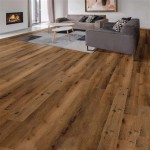Radiant Heat Flooring Costs: A Comprehensive Guide
Radiant heat flooring offers a luxurious and energy-efficient alternative to traditional forced-air heating systems. It operates by warming surfaces directly, rather than heating the air, resulting in more consistent and comfortable temperatures throughout a space. Understanding the associated costs is crucial for homeowners considering this upgrade. This article will delve into the various factors influencing radiant heat flooring costs, breaking down the expenses involved in materials, installation, and long-term operation.
The overall cost of radiant heat flooring is influenced by several key elements, including the type of system chosen (electric or hydronic), the size of the area being heated, the existing flooring material, the complexity of the installation, and the local labor rates. Before diving into a project, it's essential to obtain multiple quotes from qualified contractors and carefully evaluate all cost components.
Key Cost Factors: Type of Radiant Heat System
Radiant heat systems are primarily divided into two categories: electric and hydronic. Each type has its own set of advantages and disadvantages, directly impacting the overall cost.
Electric radiant heat systems utilize electric cables or mats installed under the flooring surface to generate heat. These systems are generally easier and less expensive to install than hydronic systems, making them a popular choice for smaller areas like bathrooms or kitchens. The initial material cost is typically lower, and the installation process is less disruptive. Electric systems are often controlled by individual thermostats, providing precise temperature control for each room. However, the operational cost of electric radiant heat is generally higher than hydronic systems, especially in regions with high electricity rates.
Hydronic radiant heat systems circulate heated water through a network of tubing embedded in the floor. The water is typically heated by a boiler or a heat pump. Hydronic systems are more complex to install, requiring more extensive plumbing work and potentially involving modifications to the existing heating system. The initial installation cost is therefore higher compared to electric systems. However, hydronic systems are generally more energy-efficient and cost-effective to operate, particularly in larger areas or when coupled with efficient heating sources like geothermal heat pumps. Hydronic systems provide consistent and even heat distribution, making them suitable for whole-house heating.
The decision between electric and hydronic systems should be based on several factors, including the size of the area to be heated, the energy costs in the region, and the long-term budget. A detailed cost analysis comparing both options is recommended to determine the most suitable and economical choice.
Material Costs: A Detailed Breakdown
The cost of materials constitutes a significant portion of the overall radiant heat flooring expense. Understanding the specific components and their associated prices is crucial for accurate budgeting.
For electric radiant heat systems, the primary material costs include the heating cables or mats, insulation boards, thermostat(s), and wiring. The cost of heating cables or mats varies depending on their size, wattage, and brand. Insulation boards are essential to prevent heat loss downwards, improving the system's efficiency and reducing energy consumption. Thermostats are used to control the temperature of the floor and can range from basic models to advanced programmable units with smart features. Wiring is required to connect the system to the electrical panel. The cost of these materials can range from $8 to $20 per square foot, depending on the quality and features selected.
For hydronic radiant heat systems, the material costs are more extensive and include the tubing, manifolds, a boiler or heat pump (if a new one is required), insulation boards, and controls. The tubing is the core component of the system and is typically made of PEX (cross-linked polyethylene) or rubber. The manifold is a central distribution point for the heated water, allowing for individual zone control. The boiler or heat pump is responsible for heating the water and can be a significant expense, particularly if a new unit is required. Insulation boards are crucial to prevent heat loss. The cost of these materials can range from $15 to $30 per square foot, reflecting the complexity and components involved.
In addition to the core heating system components, other materials may be required, such as underlayment for the flooring and self-leveling concrete to create a smooth and even surface for the system. These additional materials can add to the overall project cost and should be factored into the budget.
Installation Costs: Labor and Complexity
Labor costs make up a significant portion of the overall radiant heat flooring expense, particularly for hydronic systems due to their complexity. The installation process can be time-consuming and require specialized skills, impacting the total cost.
The installation of electric radiant heat systems is generally less labor-intensive than hydronic systems. A qualified electrician can typically install the heating cables or mats, insulation boards, and thermostat. The complexity of the installation depends on the size and shape of the room, as well as the existing flooring material. If the existing flooring needs to be removed and replaced, this will add to the labor costs. The labor cost for installing electric radiant heat systems can range from $5 to $10 per square foot, depending on the local labor rates and the complexity of the project.
The installation of hydronic radiant heat systems is more complex and requires the expertise of a qualified plumber or HVAC technician. The process involves laying the tubing, connecting it to the manifold, and integrating the system with the existing heating system. This may involve modifying the existing plumbing and electrical systems, adding to the labor costs. The labor cost for installing hydronic radiant heat systems can range from $8 to $15 per square foot, reflecting the specialized skills and time required. In addition, the cost of hiring a plumber and/or HVAC technician can vary depending on their experience and location.
The complexity of the installation is also influenced by the existing floor structure. If the existing floor is uneven or requires significant preparation, this will add to the labor costs. For example, if the subfloor needs to be leveled or reinforced, this will require additional time and materials. The type of flooring being installed over the radiant heat system can also impact the labor cost. Some flooring materials are easier to install than others, and some may require specialized installation techniques.
It is crucial to obtain multiple quotes from qualified contractors and carefully review their proposals. The quotes should include a detailed breakdown of the labor costs, as well as the cost of materials. It is also important to check the contractor's references and ensure that they are licensed and insured.
Beyond the factors discussed above, several other considerations can influence the overall cost of radiant heat flooring:
- Existing Flooring Material: The type of existing flooring impacts the installation process. Removing existing flooring like tile or hardwood adds to labor costs. Some flooring materials, like carpet, are not suitable with radiant heat.
- Insulation: Adequate insulation is crucial. Insufficient insulation leads to heat loss and higher energy bills. Adding or upgrading insulation increases initial costs but provides long-term savings.
- Zoning: The ability to control different zones independently maximizes energy efficiency and comfort. Zoning adds complexity to the system and may increase the initial investment.
- Permits and Inspections: Local building codes may require permits and inspections for radiant heat installations. These fees should be factored into the overall budget.
Ultimately, determining the precise cost of radiant heat flooring requires careful planning and consultation with experienced professionals. Consideration of all factors outlined above will facilitate informed decision-making and ensure a successful installation.

Average Radiant Floor Heating Cost In 2024 Forbes Home

Radiant Floor Heating Cost To Install Heated Floors Fixr

What Does Radiant Floor Heating Cost In An La Bathroom

Radiant Heat In Your Home Is It Worth

Radiant Floor Heating Cost In 2024 Heated Floors

Radiant Floor Heating Cost To Install Heated Floors Fixr

Radiant Heat Contractor Installation Repair Maintenance West Virginia

How Much Does Radiant Floor Heating Cost 2024 Data Angi

Heated Flooring Is It Worth The Cost Tindell Co

Radiant Floor Heating Cost To Install Heated Floors Fixr
Related Posts








